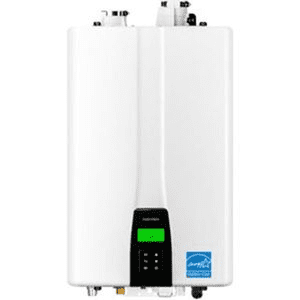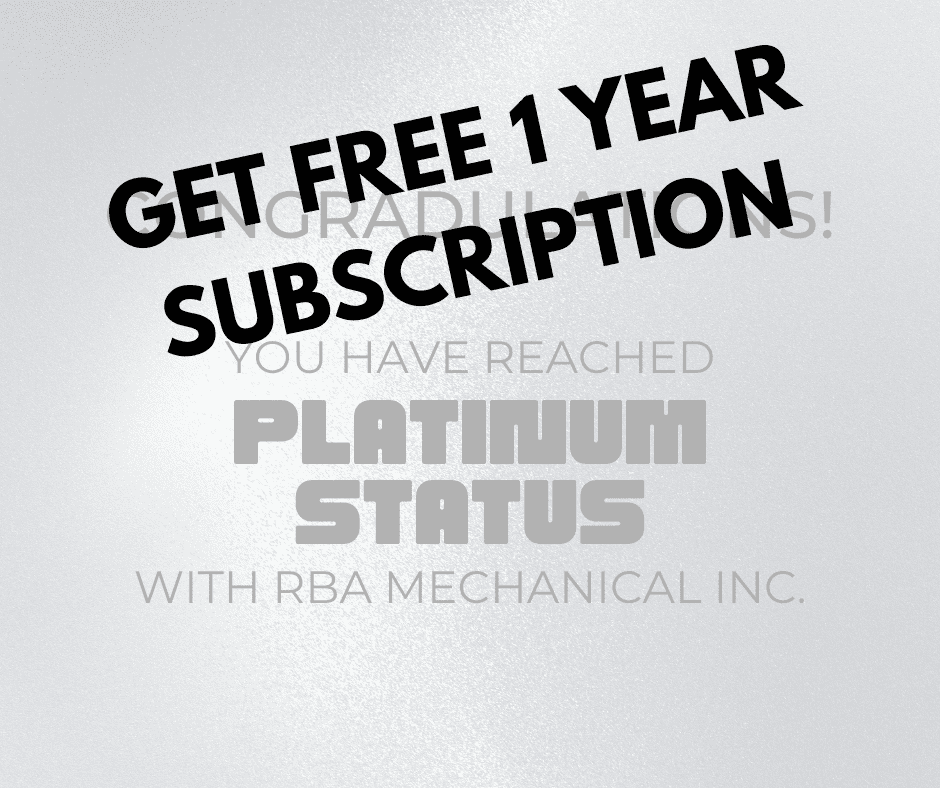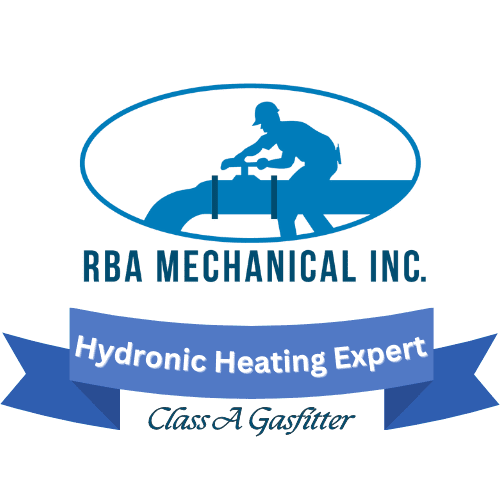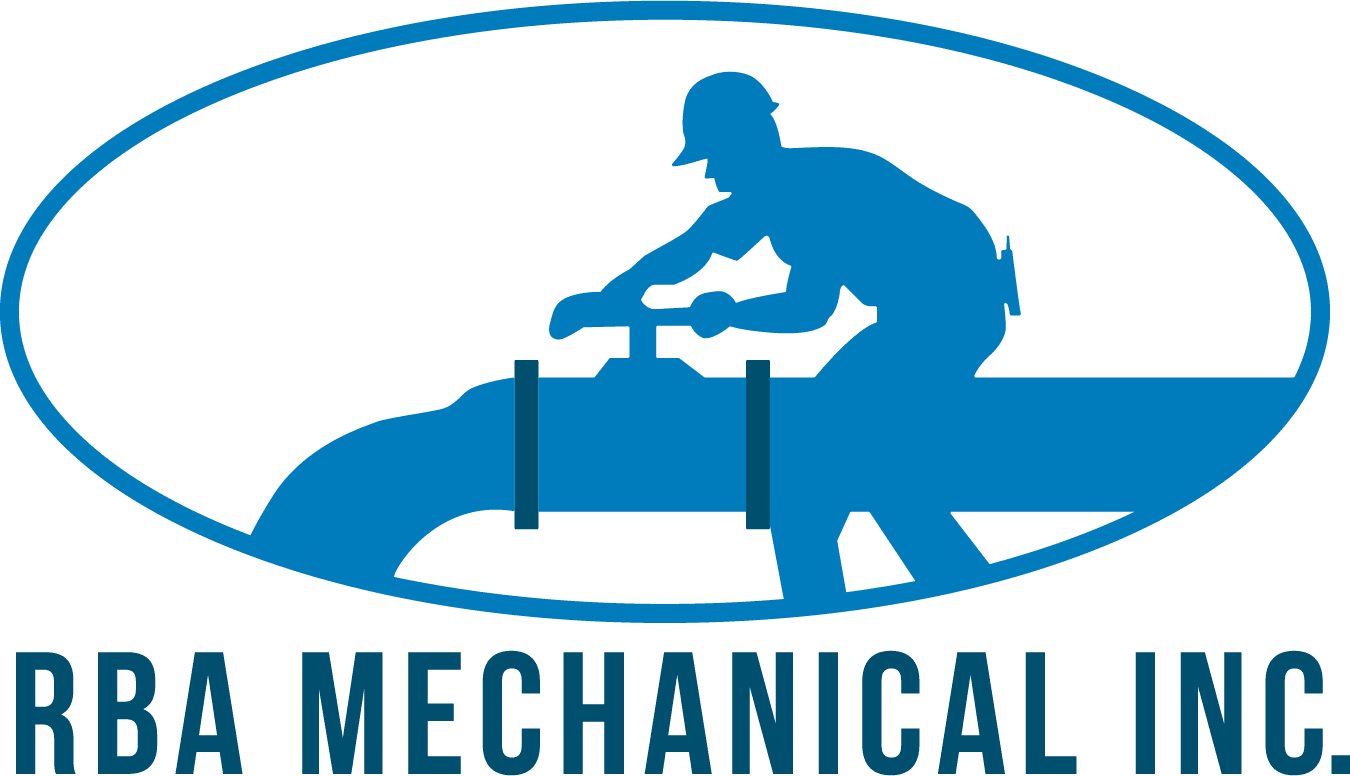For High Efficient Hot Water Supply

Also known as “on demand” or “continuous” water heaters, these heaters only heat the water as needed. They do not retain water internally except for what flows through the heat exchanger coil.
Because the water heater only heats water as needed, they are high efficient appliances.
Tankless water heaters can also provide an endless supply of hot water, as long as the hot water usage is below the maximum flow rate of the tankless water heater.
The major benefits of a tankless water heater are:
- Superior efficiency with no standby thermal loss
- Only uses energy when a hot water tap is turned on
- Endless supply of hot water, up to the maximum flow rate
- Small design that is mounted on a wall
- There is no internal water tank that can flood
The Cons of Tankless Water Heaters
In the world of domestic hot water, there is no appliance that is 100% perfect for every application and every home or building. Tankless water heaters are no different.
We all know that here in Edmonton, our water supply is classed as “hard water”. This means that our water supply is hard on water heaters. For a tankless water heater to remain efficient, it is critical that they are serviced and maintained annually (in some cases every 6 months), depending on your demands and usage.
Installing a domestic water filter will certainly help greatly. These water filters don’t soften the water, but they do remove a good amount of sediment and calcium.
Hot water delivery takes longer
Tankless water heaters take longer to generate and deliver hot water. Remember that a standard water heater has a supply of hot water ready to go, so when you turn on a hot water tap, hot water starts to come rather quickly.
With tankless water heaters, there is cool or room temperature water sitting in the pipes, so when you turn on a hot water tap, the water heater fires up and starts to heat the water as it flows through the unit. This can cause delivery delays of hot water from a few seconds to a minute, depending on how far the tap is from the water heater.
The cold water sandwich
This a term found often if you research tankless water heaters.
Basically, the cold water sandwich refers to surges of hot and cold water when a hot water tap is in use intermittantly. This is most common with the kitchen hot water tap. You turn the tap off and on intermittantly when washing dishes.
You turn on the tap, and you get the initial flush of cool water, then the heater fires up. Now you have hot water, but you just turned off the tap. Now the water heater can’t operate that quickly. So when you turn the tap back on again a moment later, you get a flush of cool water with hot again, and so on.
Basically, the short delay between when the water starts to flow and when the heater kicks on causes a short burst of cold water before turning hot.
Inconsistant water temperature
Because tankless water heaters only heat the water on demand (as needed), you may experience inconsistant water temperature if you have multiple hot water appliances running at the same time. These can include showers, dishwashers, kitchen faucets, and washing machines.
For this reason, it is critical that you know what flow rate you need for your tankless water heater, and size it correctly. Tankless water heaters come in different sizes, and must be sized properly for your usage.
Here’s a chart to give you an idea of the average flow rates of each outlet.
| Outlet | Avergate Fow Rates (GPM) |
|---|---|
| Bathroom Faucet | .5 – 1.5 |
| Dish Washer | 1 – 1.5 |
| Kitchen Faucet | 1.5 |
| Washing Machine (Clothes) | 1.5 – 3 |
| Shower | 2.5 – 3 |
| Tub | 4 |
Difficult to achieve lukewarm water
One of the lesser-known downsides of tankless water heaters is that they have difficulty achieving a lukewarm water temperature.
Since tankless water heaters need a minimum amount of water flow before activating, there’s a gap between completely cold water and the coolest warm water that you can create with a hot and cold water mix.
Of coure, this isn’t the end of the world since there are very few scenarios where you won’t be able to reach the temperature you need, but it’s worth mentioning if you’re the type of person that really enjoys cooler showers.
No access to hot water during a power outage
When a storm comes and knocks out power in your home, it also knocks out the hot water.
Tankless water heaters can be powered by gas or electricity but even gas-powered tankless water heaters rely on an electric control panel to operate the system.
So, regardless of the type of tankless water heater you have, you’ll be out of hot water in the event of a power outage.
This is an area where standard water heaters have a significant advantage over tankless. Regardless of the power source, the water stored in their tank will remain hot for several days.
So, how do you beat the Cons of a tankless water heater?
Quite simply, RBA Mechanical has been installing storage tanks with tankless water heaters for years.
We simply install a storage tank with your tankless water heater. The storage tank costs absolutely nothing to operate, no gas and no electricity. But it does give you a stored hot water supply. This option is not for anyone who uses little amounts of hot water, as you don’t want hot water sitting in your storage tank for long periods of time.
But a storage tank installed with your tankless water heater, can be the perfect option when you want high efficient “on demand” hot water supply, without all the cons.
You can purchase a tankless water heater installation through our online store. Click the following button to view now.
Liked the Post?


